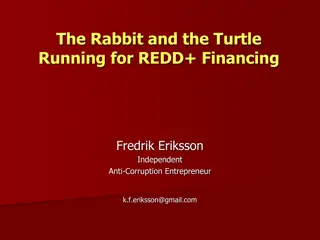Understanding Financing Decisions and Capital Funding
Explore the world of financing decisions and capital funding through images and descriptions. Discover how financial systems function, estimate external funds for growth, and learn about debt vs. equity capital. Delve into corporate financing methods, sources of funds, and the importance of raising capital. Gain insights into estimating external fund needs and the role of cash, working capital, and fixed assets. Enhance your knowledge in advanced corporate finance.
Download Presentation

Please find below an Image/Link to download the presentation.
The content on the website is provided AS IS for your information and personal use only. It may not be sold, licensed, or shared on other websites without obtaining consent from the author. Download presentation by click this link. If you encounter any issues during the download, it is possible that the publisher has removed the file from their server.
E N D
Presentation Transcript
& 3: Financing Decisions
University of the Aegean School of Business Studies Shipping, Trade & Transport Dpt. MA Shipping, Trade & Transport e-course Advanced Corporate Finance ADVFIN THEODORE SYRIOPOULOS Professor of Finance Department of Shipping, Trade & Transport School of Business Studies UNIVERSITY OF THE AEGEAN 2A, Korai street, 82100 Chios, Greece, Tel.: 22710 35 861, 6944 911 787 e-mail: tsiriop@aegean.gr http://www.stt.aegean.gr/SyriopoulosEn.asp
Background Understanding: how financial system works - functions it performs how to estimate external funds required to finance firm growth differences in debt vs. equity capital how firms raise capital in financial markets 6
Background Focus on: discussion of various forms of corporate financing - debt - equity capital methods used to raise corporate funding 7
Major source of funds for most firms: cash generated from operations when internally generated cash insufficient, then: firm must raise additional funds from external sources: debt equity capital 9
Estimating amount of required external funds if firm s assetsare expected to growmore than>>>internally generated funds external funds be raised to fill the gap most firms raise external funds needed through borrowing 10
Estimating amount of required external funds Funding needs = Cash + WCR + Fixed Assets Internally generated funds = Retained earnings + Depreciation expenses External fund needs = Funding needs - Internally generated funds External fund needs + Depreciation expenses) = ( Cash + WCR + Fixed Assets) - (Retained earnings 11
Balance Sheet - Income Statement link 2007 2008 2008 12
Financial System: Structure & Functions Financial system = institutions & processes facilitating transfer of funds between suppliers of capital firms needing cash 2 alternative financing channels: direct financing indirect financing 14
Direct Financing one way for firms to raise money is to sell securities directly to investors/savers for cash Security = certificate issued by a firm to specify conditions under which firm is to receive money equity stock bond represents represents ownership ! debt ! in direct financing , ultimate savers hold securities issued by firms 16
Indirect or Intermediated Financing firms not able to access financial market directly rely on indirect financing through financial intermediaries commercial banks typically offer.. short- to medium-term loans longer-term debt & equity capital can be raised through private placement of securities 17
Indirect or Intermediated Financing Non-banking intermediaries offer investors/savers insurance & pension products convenient access to securities markets risk diversification investment management 18
Securities Markets Securities markets can be classified along several dimensions: primary secondary market equity debt markets organized domestic international markets over-the-counter (OTC) markets 20
Securities Markets Primary vs. Secondary markets Primary market Initial Public Offering (IPO) the process of firms to raise capital by selling new shares issued to the public for the first time a market that issues new securities on an exchange primary markets are where investors can have first access at a new security issuance also known as New Issue Market (NIM) exchanges have varying levels of requirements which must be met before a security can be sold 21
Securities Markets Primary vs. Secondary markets Secondary market once the initial sale is complete further trading is said to conduct on the secondary market, which is where the bulk of exchange trading occurs each days Secondary public offerings Seasoned Equity Offering (SEOs) shares sold by existing shareholders in an equity offering 22
Advantages of Going Public current (private equity) stockholders can diversify liquidity is increased easier to raise capital in the future access to funding going public establishes firm value makes it more feasible to use stock as employee incentives Increases customer recognition enhances company reputation & prestige 23
Disadvantages of Going Public equity holders become more widely dispersed (difficult to monitor management) on-going bureaucratic procedures (numerous reports; SEC filings, Sarbanes-Oxley, etc.) operating data must be disclosed. officers must disclose holdings special deals to insiders will be more difficult to undertake a small new issue may not be actively traded, so market-determined price may not reflect true value managing investor relations is time-consuming 24
How firms issue Securities Firms can sell their debt & equity to the public at large through a public offering public offerings when offering securities to the public, firms use the services of an investment bank to qualified investors through a private placement private placement does not have to be registered drawback: - absence of organized trading in privately placed securities 26
How firms issue Securities Aside from private placements, there are general cash offerings and rights offerings(exclusively to existing shareholders) 27
How firms issue Securities General cash offerings best efforts basis (if not predetermined level offering is canceled) underwriter (bank buys shares resells to public; own risk) underwriting syndicate (originating house/lead-manager/book-runner) spread (share price sold to public share price bought by bank = 2-8%) selling concession (to selling group) certification role (by investment bank) Rights issues dilution subscription price rights-on shares ex-rights shares 29
How firms issue Securities setting an appropriate subscription price number of rights required to buy one new share ex-rights price of share & value of right effect of rights issue on wealth of existing shareholders role of investment banks in rights offerings 30
Underwriting Underwriter An investment banking firm that manages a security issuance, designs its structure, consults and guides the company into the stock market to be listed 31
IPO Prospectus Cover Page: RealNetworks 32
The Mechanics of an IPO Valuation 2 widely-used approaches to value a company: Discounted Cash Flows (DCF) Approach: calculate Present Value of estimated future Cash Flows Market Multiples (MM) Approach: estimate company value by examining market comparables (recent IPOs) 33
International Comparison of 1st-Day IPO Returns 34
Costs of an IPO Typical spread = 7% of IPO issue price By most standards, this fee is large, especially considering the additional cost to the firm associated with underpricing Puzzle: lack of sensitivity of fees to issue size possible explanation: by charging lower fees, an underwriter may risk signaling that the IPO is not of same quality as other higher-priced competitors 35
Long-Run Underperformance Although IPOs shares generally perform very well immediately following the public offering, evidence indicates that newly listed firms subsequently appear to perform relatively poorly over the next 3 to 5 after-IPO years 37
Seasoned Equity Offerings (SEOs) When a public company (already listed) offers new shares for sale public firms use SEOs to raise additional equity when a firm issues stock using an SEO, it follows many steps in common as for an IPO main difference SEO vs. IPO: a market price for the stock already exists, so the price-setting process is not necessary 38
Seasoned Equity Offerings (SEOs) 2 types of Seasoned Equity Offerings: Cash Offer a type of SEO in which a firm offers the new shares to investors at large Rights Offer a type of SEO in which a firm offers the new shares only to existing shareholders rights offers protect existing shareholders from underpricing 39
Seasoned Equity Offerings (SEOs) Rights Offer (cont d) with rights issue , company offers existing shareholders new shares in proportion to their existing shareholding, according to a predetermined formula & at a fixed price a firm raising 1 new share for each share currently issued, is said to offer a 1 for 5 (1: 5) rights issue meaning: a shareholder with 1,000 shares would receive 200 new shares (=1000 / 5), if shareholder exercises the rights 40
Seasoned Equity Offerings (SEOs) Rights Offer (cont d) a formula allows shareholders to determine what the share price will be after the rights issue announcement: + N S M S Original shares Before N rights issue New shares Rights offer price = S After rights issue + M Original shares New shares 41
Issuing Shares example - SEO PEC announces issue of 1M (Nn) new shares of common stock, through a cash offering rights issue , at subscription price per share of $80 before that, PEC share trading at $100, there were 4M (No) shares outstanding PEC notify its shareholders they are granted one right for every share they hold; rights will expire at a specific future date (e.g. 3-weeks after offer date); number of rights required to acquire 1 new share (N): N=N0/Nn; terms of issue = (4:1) + $80 before that date, shares referred as rights-on shares; afterwards, the shares are called ex-rights shares shareholders can exercise their rights & subscribe to the issue; they can sell their rights to interested investors at $4 each (if they do not want to buy new shares); or, they can do nothing & let the right expire 42
Effects of SEO Rights Issue on Wealth of existing shareholder INITIAL WEALTH DECISION ENDING WEALTH Case 1: Tender four rights and buy one new share @ $80 5 shares @ $96 = Cash Total = $480 $480 Four shares @ $100 = $400 Cash Total = $480 = 0 = 80 Case 2: Sell 4 rights @ $4 each Total = $480 4 shares @ $96 = Cash (rights) ($4 x4) = Cash (initial) = 80 $384 16 43
Share price adjustment Old Market Value + New Funds Raised = New Market Value ( 0x p0) + ( nx ps) = ( 0+ n) x pn pn = [( 0x p0) + ( nx ps)] / ( 0+ n) 0 = old number of shares outstanding p0 = rights-on share price n= newly issued number of shares ps = subscription share price ( 0+ n) = total number of shares outstanding pn = ex-rights share price (?) 44
Share price adjustment ex-rights share price (pn) = [(N * rights-on price) + (subscription price)] / (N+1) price (value) of 1 right = (rights-on price ex-rights price) 45
Debt Capital 46
Debt Capital Short-Term Bank Loans Bank Loans Sources of Corporate Debt Medium- & Long-Term Bank Loans Issue Debentures Issue Short-Term Securities Issue Corporate Bonds 47
Debt Capital: Characteristics Borrowing by issuing corporate bonds through bank loans & lease agreements alternative to borrowing medium & long-term funds coupon payment; coupon rate; maturity date; par value floatation costs; original price discount 48
Bonds: Debt Instruments Key Terms Principal Amount, Face Value, Maturity Value, Par Value: the amount of money the firm borrows and promises to repay at some future date, often at maturity; reference amount to calculate interest payments 49
Bonds: Debt Instruments Key Terms Coupon (Interest) Rate: the stated annual rate of interest paid on a bond (annually, semiannually etc.) Coupon Payment (CPN): the specified amount of interest (promised to be) paid each period, generally annually or each six months, on a bond Coupon Rate Number of Coupon Payments per Year Face Value = CPN 50























